The Morro Bay watershed is home to a rich diversity of plants and wildlife, including endemic species. These are native species that are only found in a limited geographical area. The California coast is a biodiversity hotspot, and Morro Bay is no exception. This relatively small watershed of about 75 square miles is home to many species of plants and animals that are found nowhere else in the world. In this blog, we will explore some of these species in the Morro Bay watershed.
Global biodiversity is at risk due to climate change, loss of habitat, and other human-induced factors. Endemic species are often at a higher risk of extinction due to the small area where they live and limited population size, as well as their highly specific habitat needs. Protecting endemic species is an important part of protecting global biodiversity.
Morro Shoulderband Snail (Helminthoglypta walkeriana)
While land snails are widely distributed throughout western North America, the Morro shoulderband snail is only found from North Morro Bay to Montaña de Oro State Park. It is often mistaken for a common garden snail, although they differ slightly in appearance. They spend most of the year in aestivation, a dormant state that they enter to survive the dry season. As a result, not much is known about the lifestyle of this species.
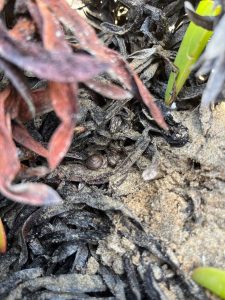
In 2022, US Fish and Wildlife Service changed the status of the Morro shoulderband snail from endangered to threatened. However, this species is still at risk due to habitat loss from development. Before much was known about these snails, they were susceptible to being killed during prescribed burns and invasive plant removal projects. Snail surveys are now required before any major habitat-modifying project to try to protect this threatened species.
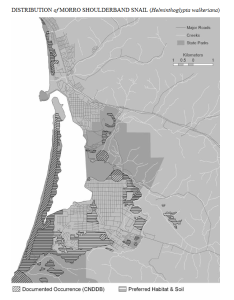
Manzanita (Arctostaphylos spp.)
The manzanita is a distinctive chaparral plant that grows along western North America, from British Columbia into northern and central Mexico. It is easily identified by its smooth reddish-orange bark, waxy leaves, pink or white bell-shaped flowers, and fruit that resembles tiny apples. There are 105 species of manzanitas, about sixty of which are found only in California. Some species, such as the Franciscan manzanita, only have one or two known wild specimens! Of all the species of manzanita, nearly half are endangered.
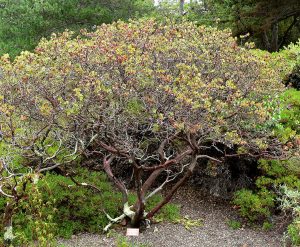
There are at least four species of manzanita endemic to the Morro Bay watershed: the Morro, Oso, Pecho, and Dacite manzanitas. All four species are listed as imperiled or critically imperiled on the California Department of Fish and Wildlife’s Special Plants List. Due to their low population numbers, they are vulnerable to extinction from disease or extreme weather events. Other threats to manzanitas include urbanization, disruption of natural fire patterns, and encroachment of invasive plants such as eucalyptus.
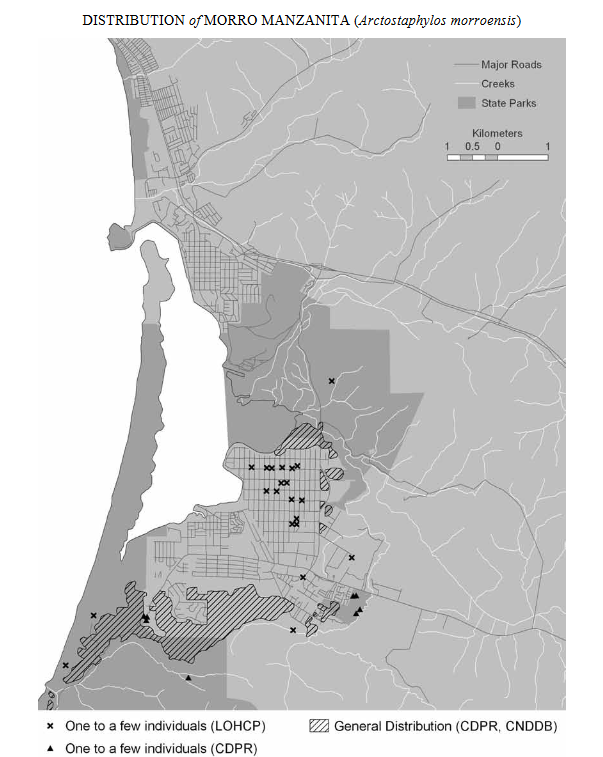
Splitting Yarn Lichen (Sulcaria isidiifera)
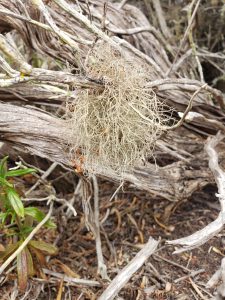
https://creativecommons.org/licenses/by-nc/4.0/
Splitting yarn lichen is a shrubby, yellow-grey lichen found in maritime chaparral and oak woodland habitats. It is endemic only to Los Osos and Baywood Park. Splitting yarn is similar in appearance to other filamentous lichens but is distinguished by a groove down the middle of its main branch (thallus) that fills with reproductive spores called propagules. All lichens are sensitive to air and water pollution, and splitting yarn lichen is at risk due to increased atmospheric pollution.
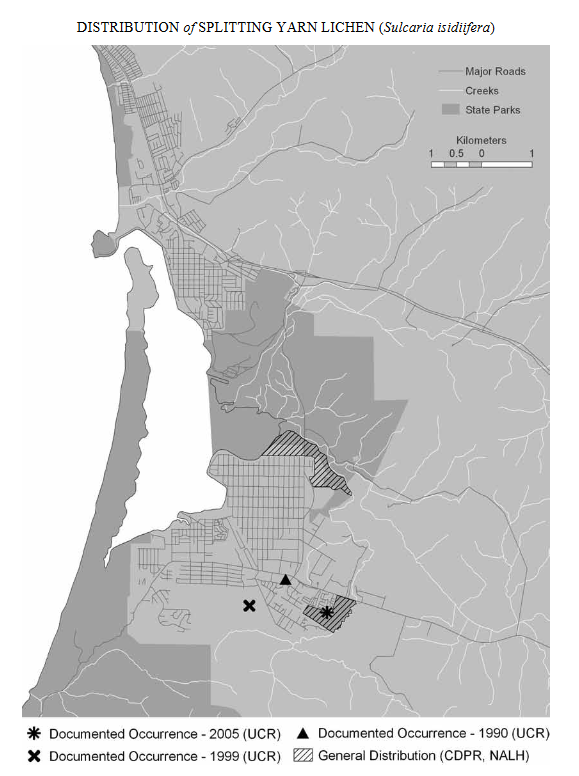
How Can You Help?
Endemic species generally face a higher risk of becoming endangered or extinct compared to non-endemic species. They are particularly susceptible to climate change impacts due to their small geographic range and specific habitat needs. There are many ways to reduce your impact on climate change, including using alternate modes of transportation, using less electricity at home, and reusing or recycling rather than disposing of items.
If you have a garden or lawn, consider using eco-friendly alternatives to pesticides and herbicides. Traditional chemical pest deterrents impact endemic native species just as much as they do invasive or “pest” species. Consider turning your yard into a native plant habitat, which will support endemic species in your area.
Community and Citizen Science
Another way to help endemic species is by making observations on iNaturalist, a community science app and website that allows anyone to upload photos of plants and animals along with a location tag. Once a species has been verified, the data can be used by researchers, land managers, or anyone else interested in that species. Keep your eyes peeled for unusual or unique species, especially if you are in an area with known endemic species. You might be the first person to find a species outside its historic range, or one that was thought to be extinct!
Resources
https://www.cepf.net/our-work/biodiversity-hotspots/california-floristic-province
https://www.iberdrola.com/sustainability/endemic-species
https://www.mbnep.org/wp-content/uploads/2014/12/Atlas_Sensitive_Species_of_Morro_Bay_Area.pdf
https://www.fws.gov/species/morro-shoulderband-helminthoglypta-walkeriana
https://www.ccber.ucsb.edu/news-events/ecology-and-diversity-manzanitas
https://lpfw.org/our-region/wildlife/manzanita/
https://www.nps.gov/prsf/learn/nature/ravens-manzanita.htm
https://nrm.dfg.ca.gov/FileHandler.ashx?DocumentID=109383&inline
http://elfin-forest.org/Library/flora/Common%20Lichens%20of%20the%20Estero%20Bay%20Area.pdf
https://www.nps.gov/articles/lichens-as-bioindicators.htm
Help us protect and restore the Morro Bay estuary!
- Donate to the Estuary Program today and support our work in the field, the lab, and beyond.
The Estuary Program is a 501(c)3 nonprofit. We depend on funding from grants and generous donors to continue our work. - Support us by purchasing estuary-themed gear from ESTERO. This locally owned and operated company donates 20% of proceeds from its Estuary clothing line and 100% of Estuary decal proceeds to the Estuary Program. Thank you, ESTERO!
- Purchase items from the Estuary Program’s store on Zazzle. Zazzle prints and ships your items, and the Estuary Program receives 10% of the proceeds. Choose from mugs, hats, t-shirts, and even fanny packs (they’re back!) with our fun Estuary Octopus design, our classic Estuary Program logo, or our Mutts for the Bay logo.
Thank you for helping our beautiful, bountiful, biodiverse bay!